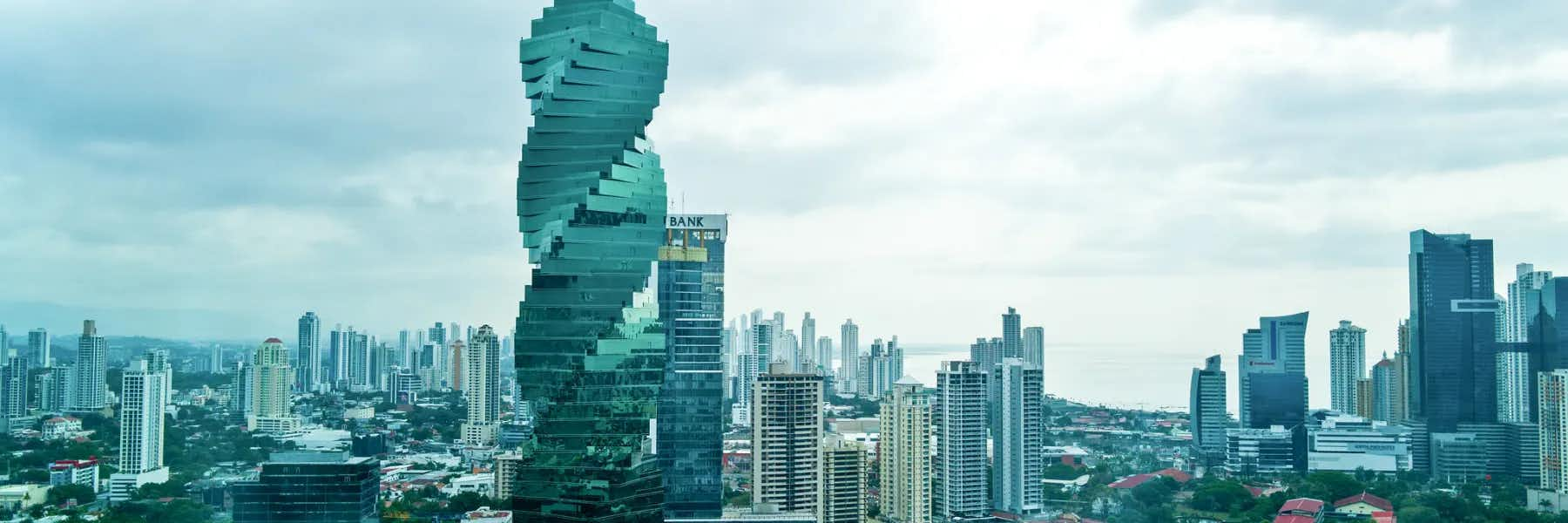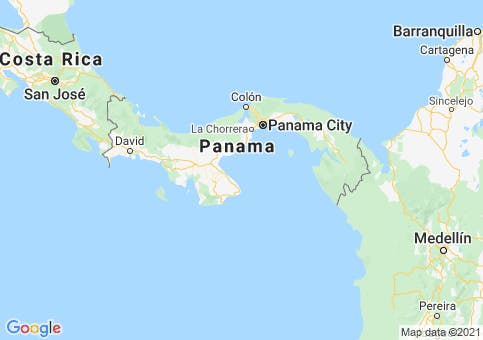Panama stands out among the world’s expat destinations because it offers solid infrastructure and First World amenities close to North America.
And when it comes to value and variety, Panama can’t be beaten. Here, you really get what you pay for, and a little money can buy you a lot of luxury. Even if you’re living on a pension, life here is easy, breezy, and fun.
There are parts of Panama where one can live on $1,300 a month, including rent, utilities, groceries, and outings. Places where you’ll find few cons and plenty of pros, from pretty views to friendly locals. Where you feel miles away from the hustle and bustle of the rat race, and live a good life, pure and simple.
Get Your Free Panama Report Today!
Get Your Free Panama Report Today!
Learn more about a healthier outdoor life in Panama and other countries in our daily postcard e-letter. Simply enter your email address below and we'll send you a FREE REPORT -- Panama: Easy, First-World Living and the World’s Best Retiree Program.

By submitting your email address, you will receive a free subscription to IL Postcards and special offers from International Living and our affiliates. You can unsubscribe at any time, and we encourage you to read more about our Privacy Policy.
Take for example Panama’s Azuero Peninsula, known as the cradle of Panamanian folklore...there are miles of coastline and pristine, uncrowded beaches...and homes costing as little as $80,000.
But what if you’re looking for more? Something closer to the Californian lifestyle you may have dreamed of…a lifestyle that may not be sustainable due to rising costs or a decrease in monthly income. Panama can offer you that, too.
There are upscale areas where life isn’t about roughing it in the developing world. Where you won’t find any Peace Corps volunteers, but rather Panamanians and expats who came in search of a comfortable, convenient environment. Simply put, Panama has it all...and the choice is entirely yours.
IL Panama Editor Jessica Ramesch discusses these and many more reasons why she chose to live in Panama:
You Call This a Third-World Country?
With outstanding growth over the past two decades, Panama’s cities and hubs began to attract everything from golf clubs and beach resorts to shopping plazas, grocery stores, restaurants, clinics, and more.
Nearly everywhere you go, there’s high-speed internet, reliable power, and water you can drink straight from the tap. Cable television and cellular service are ubiquitous, the roads are the best in the region, and every year new investment leads to improved conditions.
Panama offers both freedom and stability in important areas, from the pro-business, foreigner-friendly government to the real estate market and strong, growing economy. No other country in the region can boast such a steady, dependable track record.
Panama Has Cities, Mountains, Beaches, & More
Despite Panama’s tiny size, it’s incredibly diverse. The long Pacific and Caribbean coastlines offer endless opportunities for waterside living…not to mention fishing, scuba diving, surfing, and so much more. Mountain hamlets like Boquete and El Valle boast cooler climes than you’d expect in the tropics. There are rural areas for farm-loving types, tropical rainforests everywhere you look, and hundreds of islands dotting bright-blue waters.
Though the tourism industry has been growing, Panama has traditionally been known as a business destination. Panamanians are accustomed to foreigners—and have been since before the Panama Canal was completed in 1914. There isn’t the envy or racial tension you might find in economically deprived areas where wealthier opportunity-seekers have swept in. In part, that’s because Panama is a land of opportunity, and locals who strive to improve their lot can go far.
Indeed, Panama’s prosperity is astounding to those who arrive anticipating Third-World conditions. Panama City boasts an ever-changing skyline reminiscent of Hong Kong…robust banking and business sectors…and almost too many events and activities to choose from. Locals from different walks of life wear jewelry, drive new cars, carry smartphones, and enjoy shopping. It’s the kind of environment that makes expats feel safe, no matter what they look like.
Lower Your Cost of Living in Panama
Choose one of Panama’s trendiest areas…or retire to your dream home in the lush green countryside. No matter where in the country you go, you’re likely to find that not only does your cost of living go down…your blood pressure does, too. (And without much effort.)
Fruit, vegetables, and fresh fish are abundant and inexpensive. In many communities, expats grow accustomed to walking instead of driving everywhere. And fast food joints are not nearly as ubiquitous here as in the U.S.
Back home, you may spend hundreds of dollars a month on everything from car and health insurance…to doctor and dental consults…to medication. But most expats in Panama find these things are significantly cheaper in Panama. Real-life examples include visits to small clinics for $11…$6…and even as little as $2. Auto insurance as low as $40 a month. And dental visits for under $30!
Though apartments in Panama City rent for $800 to $1,500 a month, there are locations where savvy expats have discovered they can rent for $500 a month or less. Countrywide, water bills in Panama are typically under $20 a month. You can buy hundreds of minutes for your cell phone for $5. And there are still plenty of restaurants where you can grab a beer for half the price you’d pay in the States.
No matter what your taste or budget, you’ll find that Panama offers quality, comfort, and convenience.
Get Your Free Panama Report Today!
Get Your Free Panama Report Today!
Learn more about a healthier outdoor life in Panama and other countries in our daily postcard e-letter. Simply enter your email address below and we'll send you a FREE REPORT -- Panama: Easy, First-World Living and the World’s Best Retiree Program.

By submitting your email address, you will receive a free subscription to IL Postcards and special offers from International Living and our affiliates. You can unsubscribe at any time, and we encourage you to read more about our Privacy Policy.
Here Are Our Top Ten Reasons to Live in Panama:

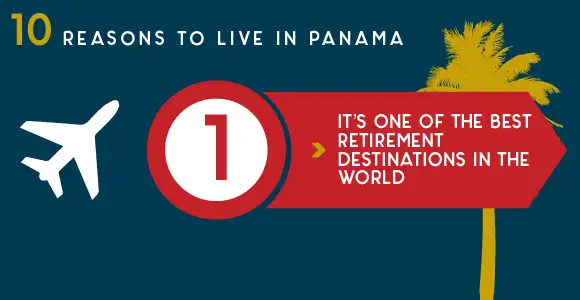
Panama consistently ranks among the top five retirement destinations in the world. In fact, it has taken the number one spot in International Living’s Annual Global Retirement Index many times.

Resident retirees can avail of many benefits and discounts, such as:
50% off entertainment
30% off bus, boat, and train fares
25% off domestic airline tickets
20% off medication
10% or more off healthcare costs

If you’re from the U.S., you don’t need to worry about confusing exchange rates—Panama uses the U.S. dollar.
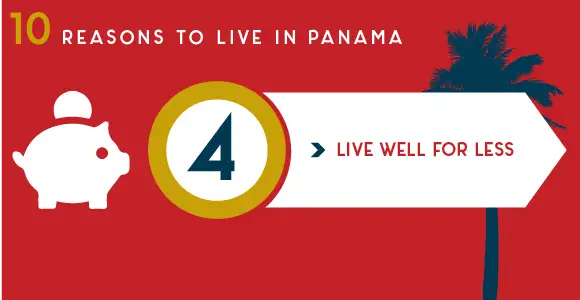
In Panama, the cost of living is low, especially considering all the benefits to life here. A couple can live well on $2,600 a month or less, including rent.

In Panama, you’ll see the sun nearly every day of the year. At sea level, temperatures range from the mid-70s F to the high 80s F. And there are no hurricanes here…ever!

Direct flights from Miami to Panama are 2 hours and 50 minutes.
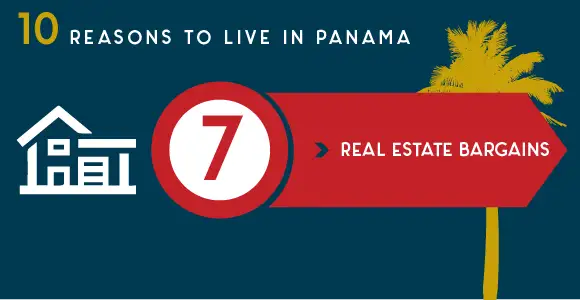
From two-bedroom condos for $160,000 in Panama City to brand-new houses for $95,000 in David to traditional homes for 80,000 in Las Tablas, there’s plenty of affordable real estate available for you to buy.
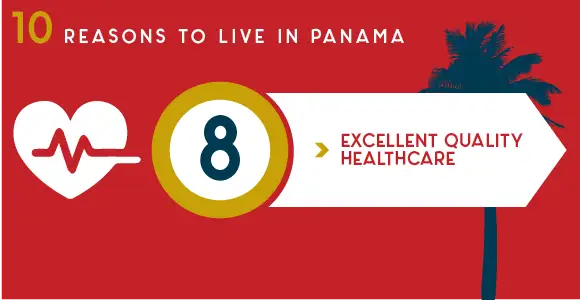
Panama has many top-notch medical facilities. Don’t take our word for it…the Punta Pacifica Hospital in Panama City is affiliated with Johns Hopkins International.
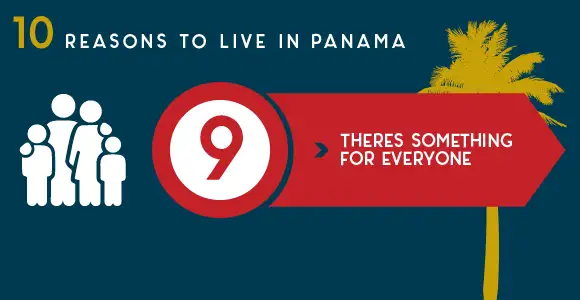
Whether it’s lush green valleys in the highlands, white-sand beaches on the Caribbean, or cosmopolitan city life in the capital…Panama has something for everyone.
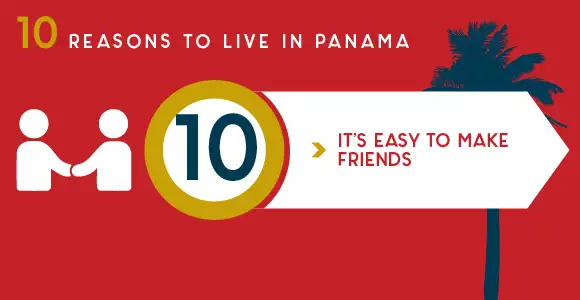
There are already well-established expat communities in areas like Panama City, Coronado, and Boquete, so finding like-minded expats is a cinch. These communities will also be there to lend a helping hand when you first move over.
The Pros and Cons of Living in Panama
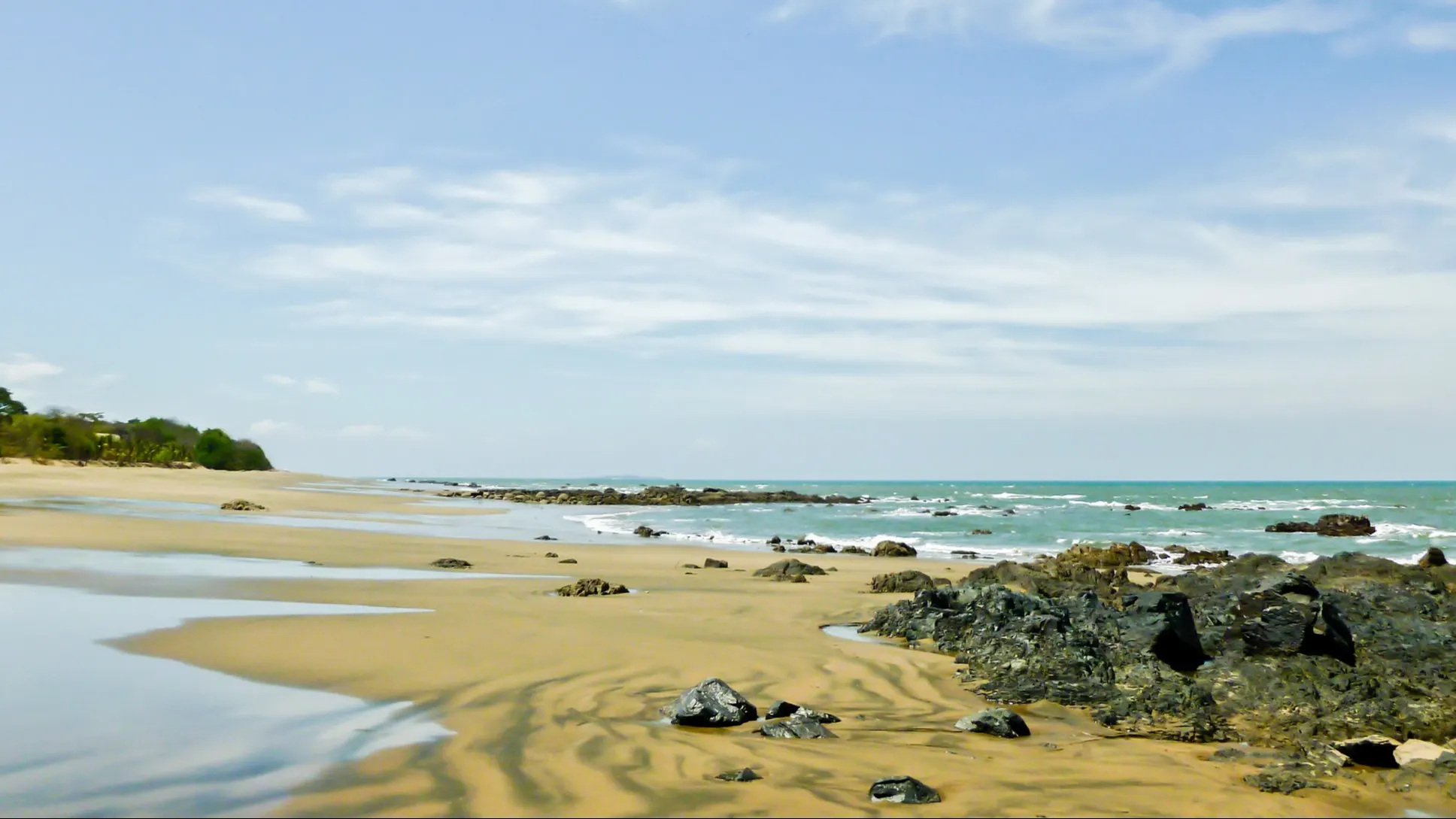
By Nanette Witmer
Panama’s popularity has much to do with its modern infrastructure, proximity to the U.S., beautiful scenery, and mild climate. Pair that with the Pensionado program that offers residence and special benefits to pensioner expats from North America and beyond, and you have an ideal retirement destination.
But of course, nowhere is perfect, so here’s my list of the pros and cons of living in Panama.
Pro: Panama is Safe for Expats to Live In
As a rule, Panamanians don’t like confrontation. Panama, like everywhere, does have some crime, but it is usually petty theft. Use the same due diligence and common sense that you would in any setting worldwide, and you will be fine.
Pro: Panama Uses the U.S. Dollar
With the dollarized economy, living and doing business in Panama is easy. Many U.S. credit cards don’t charge extra fees for making purchases in Panama, ATMs are easy to use, and buying property is easy.
Pro: Panama’s Residents are Happy People
Panamanians love their country and are extremely cheerful people. They will take the time to help you, even if you don’t speak Spanish.
Pro: Panama Has an Affordable Cost of Living
In Panama, you can live very well on a lot less than in many other countries. As a couple in Chiriquí, you could live comfortably in Panama on $1,995 a month. But you can spend as much or as little as you want to find your own version of a perfect lifestyle.
Pro: Panama Has High-Quality Healthcare
Panama’s healthcare is some of the best in Latin America. Healthcare costs are much less than in North America, and the quality of care is excellent. Panama City offers top-notch medical facilities, equipment, and well-trained doctors in all areas of medicine. More remote areas have local clinics where you will often find doctors visiting hospitals in Panama City. Larger cities have great hospitals and specialists, and no matter where you are in the country, you can almost always find an English-speaking doctor for your care.
Pro: Panama Has Modern Infrastructure
New roads and bridges are always being built and maintained. Good, reliable internet and good cell phone service are country-wide, and in most areas of Panama, you will find good drinking water from your kitchen faucet.
Con: Panama Embraces the “Mañana” Principle
The definition we have for the mañana principle is, “when they say tomorrow, it just means not today.” This attitude can be one of the most frustrating things for expats to get used to until they have acclimated to a slower lifestyle. So, take a deep breath and lower your blood pressure. It will get done, but just not today.
Con: Panama Has Its Share of Bureaucratic Problems
Getting anything done at a government office here requires patience and time. Don’t compare how things are done in the U.S. to Panama or you will be disappointed. Some things move slowly in Panama, and you won't get them to move any quicker by criticizing.
Con: Panamanians Love to Party and Enjoy Life
A popular motto is “work to live, don’t live to work.” That means parties are frequent and usually go into the early hours of the morning. This can be annoying, but if you become part of the group and go with the flow, you will find yourself partying and enjoying social time with your Panamanian neighbors.
In the end, the cons of Panama are only cons until you realize that you just need to adapt, go with the flow, slow down, and make living each day your priority. Latin culture is different, but not bad. When you surrender all your preconceived notions about what Panama should be like, the cons disappear. Then you are left with the best of Panama, and you will enjoy your time here.
Insider Tips For Living in Panama
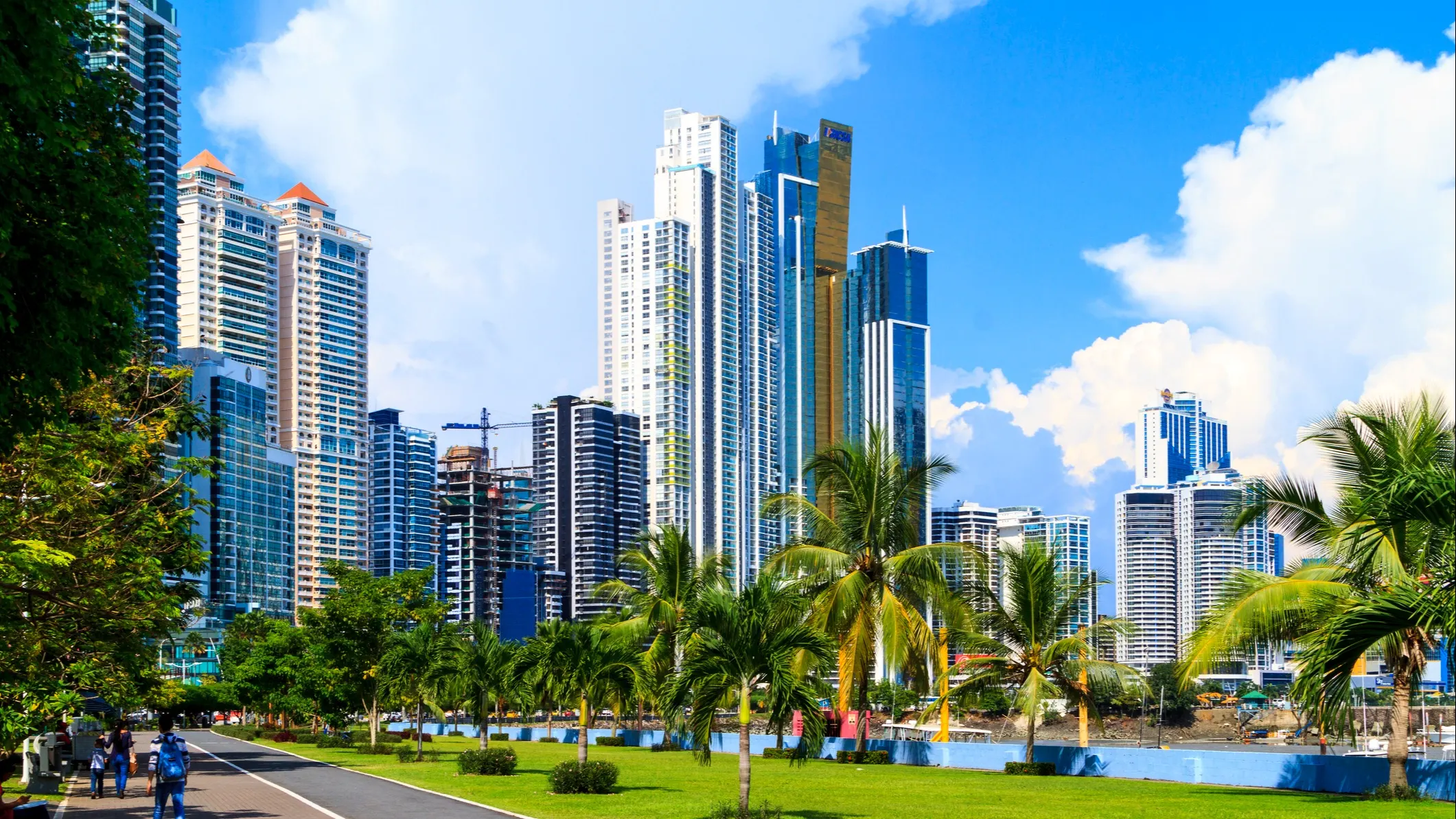
Panama Holidays
If you plan to do business while in Panama, check the official list of holidays before you schedule your trip. Keep in mind that it’s common for traffic jams to form on the first and last day of a long weekend, as city-dwellers leave town or return en masse. Important dates and bank holidays in Panama include the ones shown below, but please note that this is subject to change and additions:
Jan. 1: New Year’s Day (many offices close at noon Dec. 31).
Jan. 9: National Martyrs’ Day (dry: alcohol is not sold for 24 hours).
Carnaval: Celebrated the Friday, Saturday, Sunday, Monday, and Tuesday before Ash Wednesday, which marks the beginning of the Catholic Lent. Some businesses close for the first half of Ash Wednesday to allow workers to attend morning mass.
Good Friday: Marking the start of the Catholic Holy Week, the date of Good Friday also varies from year to year. Many businesses also close for all or part of the preceding day, Good Thursday. It’s common for families to head to the beach or the countryside for the long Easter weekend (dry: alcohol is not sold for 24 hours on Good Friday).
May 1: Labor Day.
Aug. 15: Founding of Panamá La Vieja (the original city).
Nov. 2: Day of the Dead.
Nov. 3: Independence from Colombia.
Nov. 5: Colón Independence Day (celebrated to mark the day Colombian forces left the city of Colón).
Nov. 19: First Cry of Independence from Spain.
Nov. 28: Independence Day from Spain.
Dec. 8: Mothers’ Day.
Dec. 25: Christmas Day (many offices will close at noon on the 24th).
*Often, the government will decree “dias Puente”—this is the practice of observing fixed-date public holidays on the following Monday, so as to create a long weekend and encourage “internal tourism.”
*Note that stores, banks, and supermarkets are typically packed to bursting a day before, on, and a day after payment of the Decimo Tercer Mes, a “13th month” bonus paid out over a year in three parts, typically on April 15, Aug. 15, and Dec. 15. Try to get your shopping done before or after a “decimo week.” Traffic is extremely heavy on these weeks and during most of December.
Tips on Tipping
Restaurants: If you’re impressed with the service, it’s courteous to leave a tip. The usual amount is 10% to 15%. A recent ruling prohibits restaurants from automatically adding the tip, but always check your bill to make sure. Most bills come with calculations for 10%, 15%, and 20% printed at the bottom for your convenience.
If you pay with a card, servers will often ask if you’d like to include the tip. Sometimes they ask you to specify a percentage and other times they just add 10%. Expect to pay a 7% tax on restaurant bills.
For airport and hotel porters, tip as you would in the U.S. ($5 for hauling a couple of bags from the taxi to check-in, for example).
Taxi drivers in Panama are not generally tipped unless they do something special—help you carry bags, etc.
You should tip tour guides and tour bus drivers, boat captains, and private drivers for good service; 5% to 10% is customary.
Most restaurants offer valet service, for which you are expected to tip at least $1. Some high-end places charge $3 to $6 (The Sortis Hotel charges even more if you stay several hours). In busy nightclub districts, men called bien cuida’os (because they say your car will be bien cuidado—or well taken care of) offer informal service. Though generally not affiliated with any of the clubs or restaurants, they will often “charge” $3 to $5 for “letting” you park on the street or in a vacant lot and “watching” your car. Many people pay rather than find parking farther away.
It is customary to tip housekeeping in nice establishments. You can leave $2 to $3 on your pillow every morning, or leave a lump sum on the day you check out. Consider adding a few extra dollars if you are traveling with kids or receiving special attention.
LGBTQ
Panama tends to rank high on political and civic freedom indexes, and gay expats report feeling comfortable here, thanks in part to an established LGBTQ community. In 2008, an antiquated law criminalizing same-sex activity was abolished. In 2006, Panama ruled that transgender citizens who had undergone sex assignment surgery could change their legal gender on birth certificates.
A new gay marriage proposal is another example of how progressive Panama is. Following the proposal, there’s been a lively debate in Panama. There was a march showing support (led by Panama’s First Lady), and later those opposed (thought to hold the majority at this time) also held a march. In 2018, a government official signaled that Panama would likely comply with a landmark Inter-American Court of Human Rights ruling that recognizes same-sex marriage and transgender rights. Then-Vice President Isabel de Saint Malo added that the Panamanian Constitution guarantees the principle of nondiscrimination. However, at the time of writing, Panama has yet to make an official ruling.
Marijuana Laws
Though some countries in Latin America have taken steps toward legalizing marijuana use, it continues to be illegal in Panama. There are groups lobbying for the approval of at least medical marijuana to start with. A proposal was submitted to the legislative assembly that would have legalized certain forms of medicinal marijuana. Though marijuana use is fairly common in Panama, it’s not as openly used as in other countries, and sentences for possession can include significant jail time both prior to and after trial and/or fines, community service, and rehab requirements.
Get Your Free Panama Report Today!
Get Your Free Panama Report Today!
Learn more about a healthier outdoor life in Panama and other countries in our daily postcard e-letter. Simply enter your email address below and we'll send you a FREE REPORT -- Panama: Easy, First-World Living and the World’s Best Retiree Program.

By submitting your email address, you will receive a free subscription to IL Postcards and special offers from International Living and our affiliates. You can unsubscribe at any time, and we encourage you to read more about our Privacy Policy.
